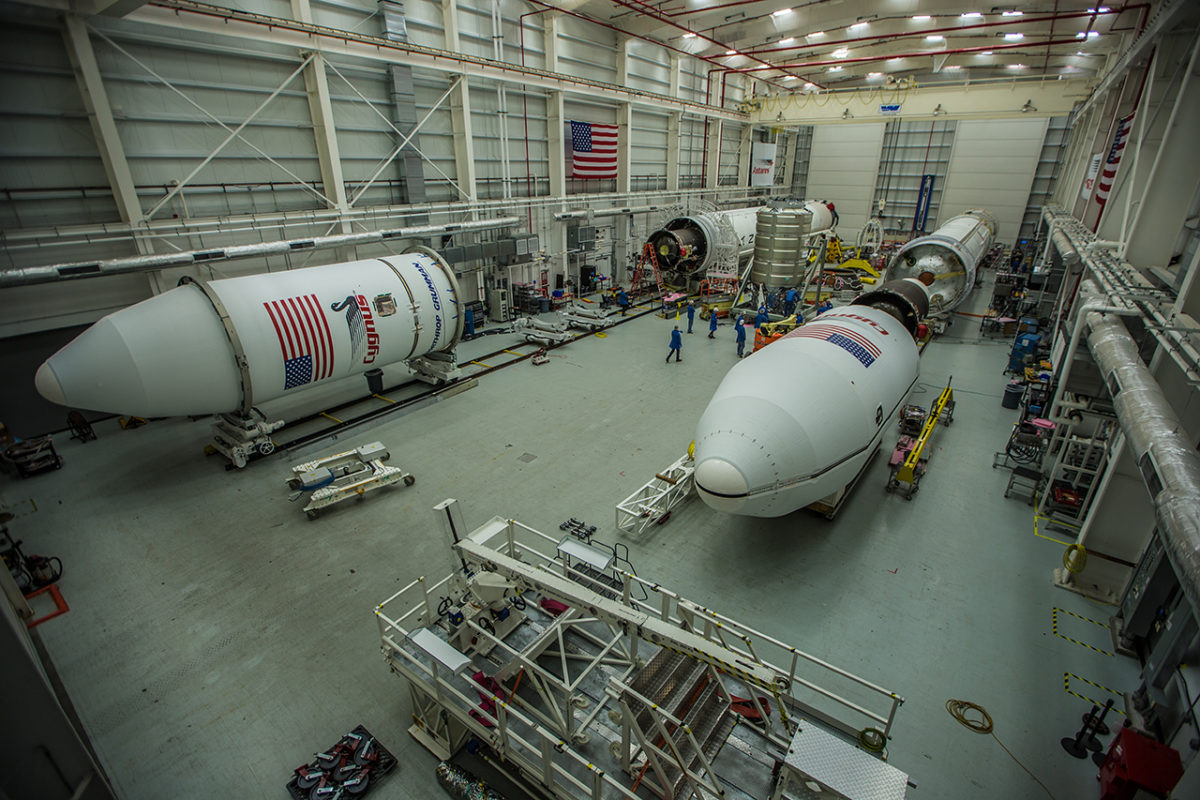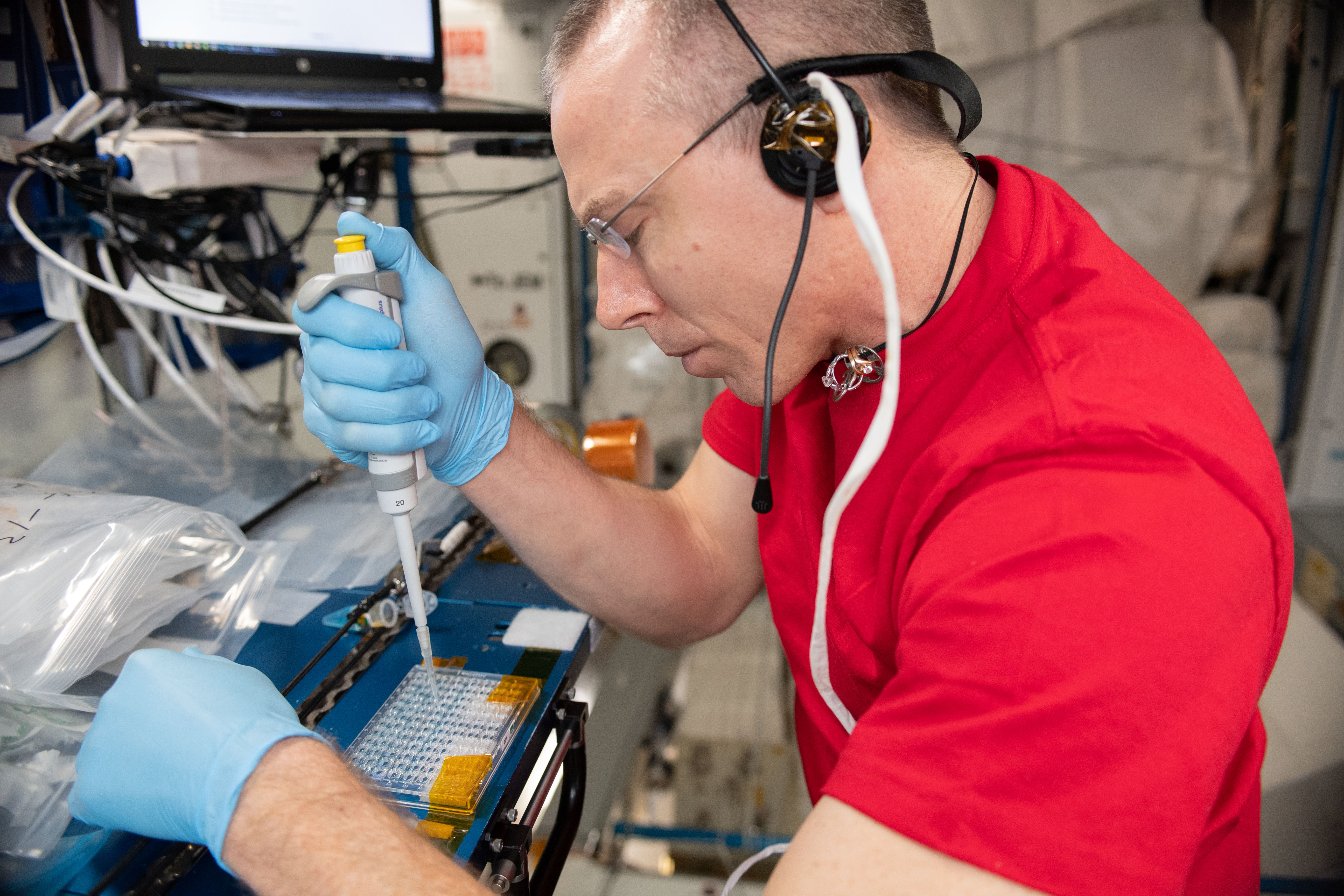Some Strange Science Will Launch Into Space This Week for NASA
This Thursday, crystallizing proteins from the Michael J. Fox Foundation, a dizzying virtual-reality system, ultratiny membranes and the "Refabricator," a device that turns waste into 3D-printing filament, will all be shooting into space.
This weird science and so much more will launch Friday (Nov. 16) at 4:23 a.m. EST (09323MT) on Northrop Grumman's (formerly Orbital ATK) 10th commercial resupply mission to the International Space Station. The company's Cygnus spacecraft will lift off on its Antares rocket from the Mid-Atlantic Regional Spaceport at the Wallops Flight Facility in Virginia, carrying about 882 pounds (400 kilograms) of research and hardware for these experiments, NASA officials said in a statement. In total, the rocket will launch about 7,500 pounds (3,402 kg) of scientific equipment and crew supplies like food and clothing to the International Space Station.
These experiments will be among the hundreds of scientific investigations currently happening aboard the space station. The launch will be visible along parts of the U.S. East Ccoast, and you can watch it live online here at Space.com, courtesy of NASA TV. [Launch Photo: Orbital ATK's Antares Rocket & Cygnus OA-9 Soar to Space Station]

Northrop Grumman's Cygnus vehicle has been named in honor of NASA astronaut and U.S. Navy officer John Young. Young spent 835 hours in space over six missions as a NASA astronaut.
Aboard the Cygnus vehicle will be a device called the Refabricator as part of the In-Space Manufacturing Refabricator project. This is the first integrated 3D printer and recycler that will turn waste plastic into filament for 3D-printing aboard the space station. The filament will be used for repairs aboard the space station and also as a means of recycling waste. The device could also be used to fabricate things on board the space station.

This technology could be very useful for long-term deep-space missions where astronauts will have to deal with waste, repair and resource issues on a regular basis. As the investigation's research overview states, "Without a recycling capability, a large supply of feedstock would need to be stowed on board for long-duration exploration missions." This investigation is sponsored by NASA's Technology Demonstration Office.
Microgravity virtual reality
The Effect of Long Duration Hypogravity on the Perception of Self-Motion (VECTION) study, another investigation launching to the space station, will explore how a microgravity environment might affect an astronaut's ability to visually interpret motion, orientation and distance.
Get the Space.com Newsletter
Breaking space news, the latest updates on rocket launches, skywatching events and more!
Here on Earth, our senses work together to let us know how far away we are from things, how fast they are moving, and how they are oriented. In space, gravity no longer plays a part in our vestibular system, a system that contributes to our sense of balance and orientation. The VECTION study aims to better understand how microgravity affects these senses using virtual reality.
In this study, astronauts will wear a virtual-reality (VR) system that will provide computer-generated visual clues to try to create artificial gravity using visual acceleration, Laurence Harris, a professor at York University in Toronto and principal investigator in this research, said at a news conference on Thursday, Nov. 8. After the VR simulation, the astronauts will report how far they perceive that they moved, how far away things were from them, etc.
"Many astronauts do feel disoriented or suffer from space sickness when they first arrive at the space station," Harris said. So, to understand how a microgravity environment might affect astronauts at multiple points in their trip, they will participate in the VR simulation as soon as they arrive in space, once they've gotten used to the environment and once they've returned to Earth.

The Crystallization of LRRK2 Under Microgravity Conditions-2 (CASIS PCG-16) investigation, developed in part by the Michael J. Fox Foundation, will grow crystals in an attempt to fight Parkinson's disease. Leucine-rich repeat kinase 2 (LRRK2) proteins are involved in Parkinson's disease, and studying larger crystals grown by proteins canhelp scientists learn about the protein structure. However, crystals of that protein grown on Earth are too small and compact to study effectively.
One previous attempt was made to grow these crystals in microgravity, researchers said during the news conference, but the attempt was unsuccessful. After revamping the investigation, researchers will once again try to grow these crystals in microgravity aboard the space station. By studying larger LRRK2 crystals, the research team hopes to gain a greater understanding of the protein's shape and morphology and help scientists better comprehend Parkinson's disease.
The ultimate goal of this investigation is simple. They are "looking for a therapeutic that will either slow, stop or reverse the disease," Marco Baptista, director of research programs for the Michael J. Fox Foundation, said during the news conference.
Tiny carbon capture
The Design of Scalable Gas Separation Membranes via Synthesis Under Microgravity (Cemisca) investigation is developing a tiny method to capture carbon dioxide. This experiment will test and synthesize tiny membranes made of calcium-silicate particles, as thin as a human hair and with pores 100 nanometers across or even smaller, the researchers said. These nanoporous membranes can separate carbon dioxide from other gases in the air, making them an important developing technology to combat the harmful effects that too much carbon dioxide can have on our planet.
Researchers predict that creating these membranes in microgravity might be lower in cost and produce more durable membranes that use less energy. Additionally, the microgravity environment gives researchers the "ability to control the size and shape of the nanoparticles," Negar Rajabiat of Cemscia LLC, the principal investigator for this National Lab research, said at the news conference. This means that they can customize the membranes to separate different types of gases, even though, as Rajabiat said.
You can watch Northrop Grumman's Antares rocket launch live here, beginning at 4 a.m. EST (0900 GMT), courtesy of NASA TV.
Editor's note: This story was been updated to include NASA's new launch date and time for Cygnus following a one-day weather delay.
Follow Chelsea Gohd on Twitter @chelsea_gohd. Follow us @Spacedotcom, Facebook and Google+. Original article on Space.com.
Join our Space Forums to keep talking space on the latest missions, night sky and more! And if you have a news tip, correction or comment, let us know at: community@space.com.

Chelsea “Foxanne” Gohd joined Space.com in 2018 and is now a Senior Writer, writing about everything from climate change to planetary science and human spaceflight in both articles and on-camera in videos. With a degree in Public Health and biological sciences, Chelsea has written and worked for institutions including the American Museum of Natural History, Scientific American, Discover Magazine Blog, Astronomy Magazine and Live Science. When not writing, editing or filming something space-y, Chelsea "Foxanne" Gohd is writing music and performing as Foxanne, even launching a song to space in 2021 with Inspiration4. You can follow her on Twitter @chelsea_gohd and @foxannemusic.









